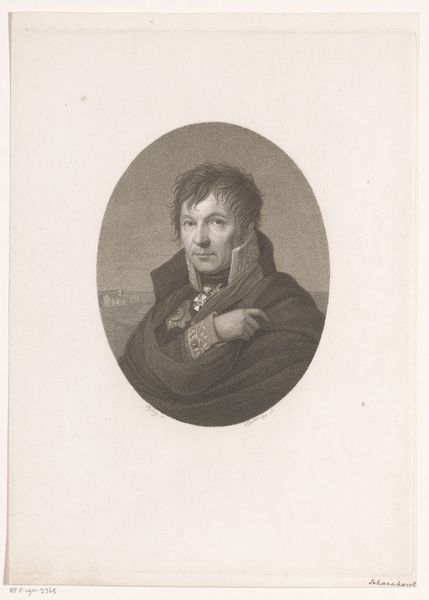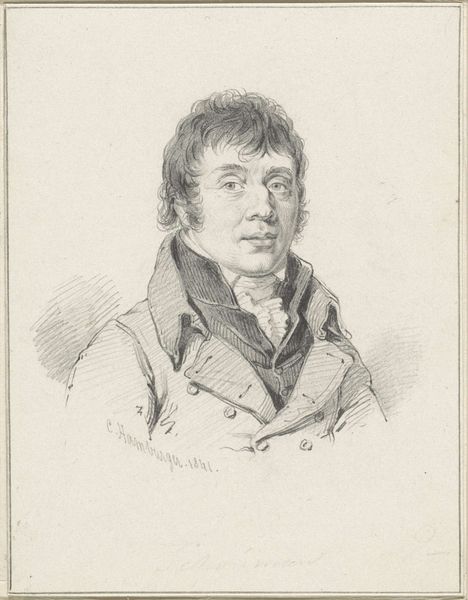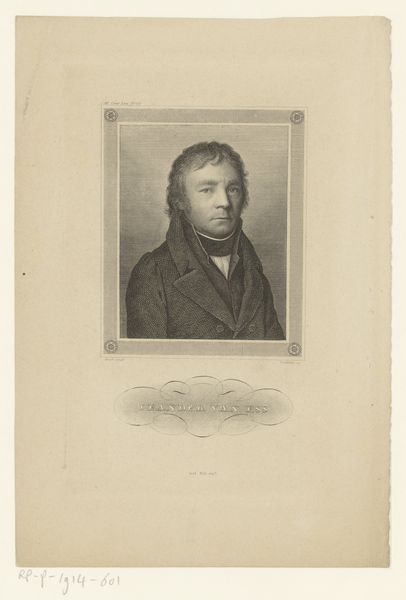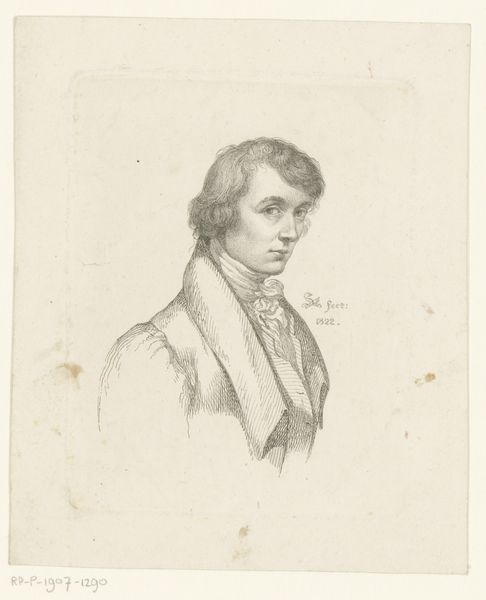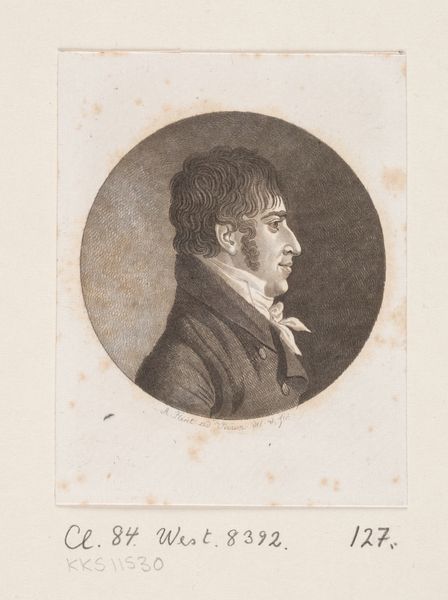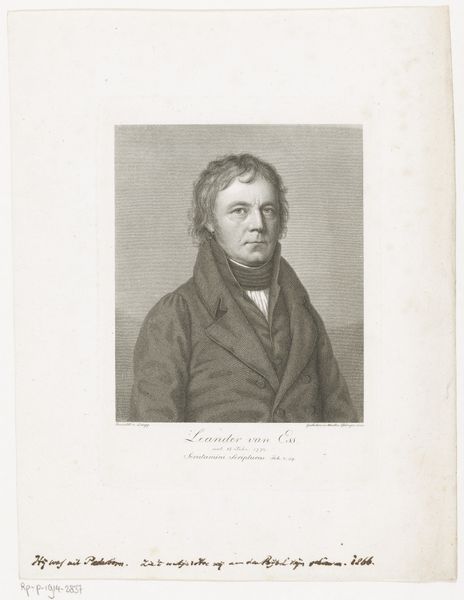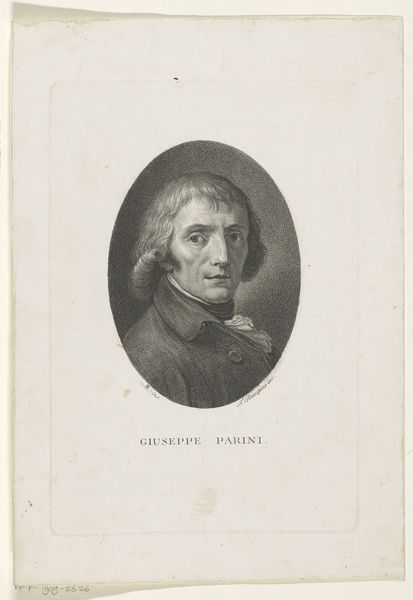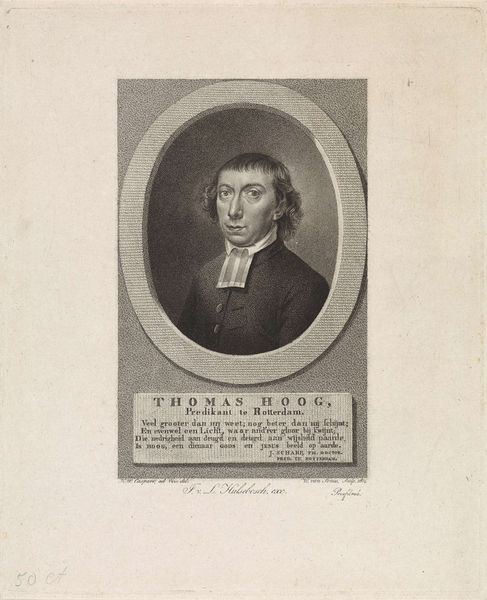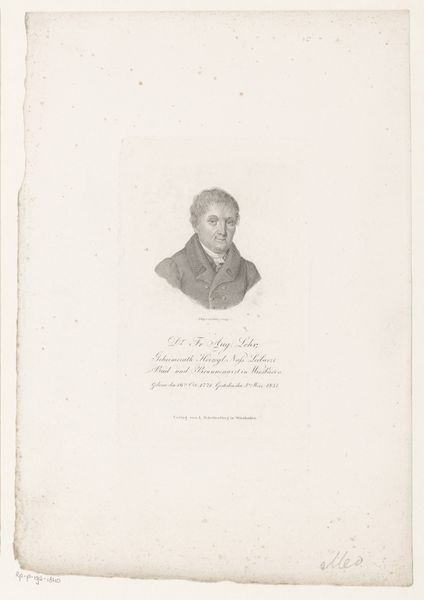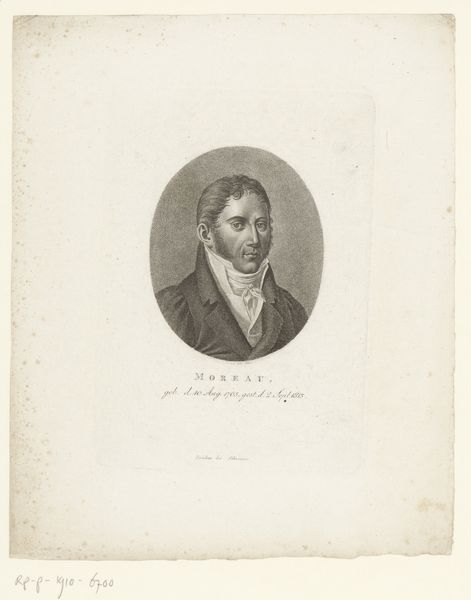
drawing, paper, ink
#
portrait
#
drawing
#
neoclacissism
#
paper
#
ink
#
pencil drawing
#
portrait drawing
#
history-painting
Dimensions: height 406 mm, width 298 mm
Copyright: Rijks Museum: Open Domain
Editor: So, this is Pierre Michel Alix's "Portrait of Jean-Paul Marat," created sometime between 1793 and 1795. It’s a drawing in ink on paper. I find it striking how… intimate it feels, despite depicting such a controversial figure. How do you interpret this work, considering Marat’s role in the French Revolution? Curator: It's essential to situate this portrait within the tumultuous context of the French Revolution. Alix's depiction of Marat is particularly interesting when we consider Marat's radical politics and his eventual assassination. The artistic style—Neoclassicism— often evokes ideas of order and reason, yet Marat’s life was anything but. Don't you find that juxtaposition thought-provoking? Editor: Absolutely! It seems like there’s a tension between the subject and the style. Does Alix’s portrayal attempt to legitimize Marat, even ennoble him, despite the violence associated with the Revolution? Curator: That's a very astute observation. Neoclassical portraits often aimed to present their subjects as virtuous citizens, but here, it arguably serves to sanitize a complex and divisive figure. Consider the broader impact: How do artistic choices like these influence our understanding and memory of historical events and the people who shaped them? Editor: I hadn’t really thought about it that way – it's like the artwork is performing its own kind of political act, shaping public opinion. Curator: Exactly. And how do these representations influence contemporary social movements and struggles for justice? It reminds us to question whose narratives are being told and how art can either reinforce or challenge existing power structures. Editor: That makes you see the artwork in a completely different light; now it's a document about history and a reflection on today's struggles. Thank you! Curator: Precisely. And art remains such a powerful tool to help us connect with the past, while continuing to think critically about the present.
Comments
No comments
Be the first to comment and join the conversation on the ultimate creative platform.
